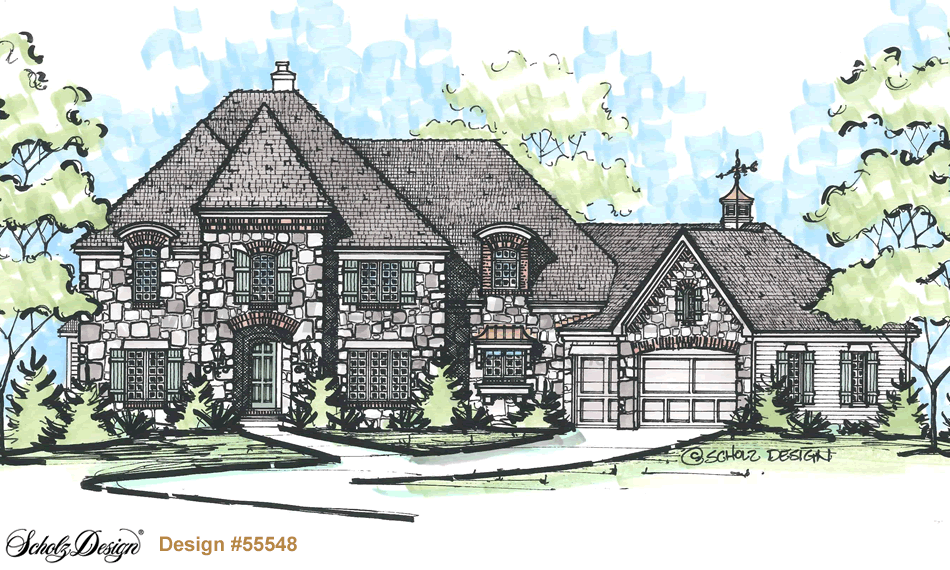When the weather’s nice, Mother Nature beckons for us to delight in her beauty. Whether grilling out or having friends over, the connection point, such as a door onto your deck or patio, can become a traffic jam.
Many floor plan layouts accommodate a circular traffic flow between indoors and outdoors by having more than one door from public areas of the home. A wonderful example is Plan #55548, with a door from the breakfast area and double sets of French doors leading from the living room onto the covered porch. There’s even a door from the owner’s suite sitting area directly accessing the porch—perfect for enjoying your first cup of coffee on the weekend!
Convenience
How many steps do you have to take to get groceries from your car to the pantry or fridge? Do you have to climb stairs? Do you have to walk clear across one space (e.g., the family room) just to get to the kitchen? Minimizing grocery traffic distance and turns is an aspect of “high design.” It’s usually not obvious when glancing at floor plans, but it will be very obvious after you have moved in!
Stair Location
If you’re building a new home with either a basement, second floor or both, where do you want the stairs to be situated? Stairs located in the center of the home may minimize hallways upstairs, but many times center stairs are an assumption at the design phase. When center stairs run along the entry, they may squeeze the traffic pattern and make the space appear and feel tight. Stairs right at the entry may interrupt movement through the home when the entry door is open.
Many of today’s buyers prefer an open, inviting entry view that does not include the staircase, locating stairs instead to one side of the home, often near the garage. Attending the public grand opening of a new model home in Minneapolis, the most common visitor comments complimented the rear staircase location!
Door Conflict
“Door conflict” is the term given whenever a door, by swinging open, might swing into another door, bump into cabinetry or furniture, or present some other design issue. Usually the home designer can locate doors so the swings don’t run into each other. Sometimes, door conflict can be avoided by switching one of the doors to a pocket door, which slides into the wall. Other times, two narrower hinged doors replace a single larger door.
Door swings can also interrupt the usability of a room, dictating traffic ways and furniture placement. Sometimes, this type of door conflict can be overcome by re-locating the door into the hallway, which has the secondary benefit of reducing perceived hall lengths.
Read more about Traffic Flow. And, Search our plans for a home that suits your traffic flow!


